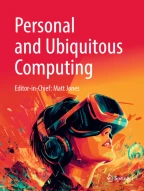Abstract
Information and computing technologies have gone wild; broken free as servants of organizational ends and launched off the desktop, computing artefacts are finding new forms, new rationales and new circumstance of use. In some cases this change is purposeful and deliberate, but in others an intriguing socio-technical drift is at work, and the influences over that drift are yet to be understood. Here, we surface four interrelated dimensions along which transformation is occurring (technology, context, users and purposes), and we commence a discussion aiming to articulate both the visible and the unremarked upon influences over that drift.
Similar content being viewed by others
References
Harper R (ed) (2003) Inside the smart home. Springer, Berlin Heidelberg New York
Hindus D (1999) The importance of homes in technology research. Coop Build Lect Notes Comput Sci 1670:199–207
Author information
Authors and Affiliations
Corresponding author
Rights and permissions
About this article
Cite this article
Howard, S., Kjeldskov, J. & Skov, M.B. Pervasive computing in the domestic space. Pers Ubiquit Comput 11, 329–333 (2007). https://doi.org/10.1007/s00779-006-0081-8
Received:
Accepted:
Published:
Issue Date:
DOI: https://doi.org/10.1007/s00779-006-0081-8
